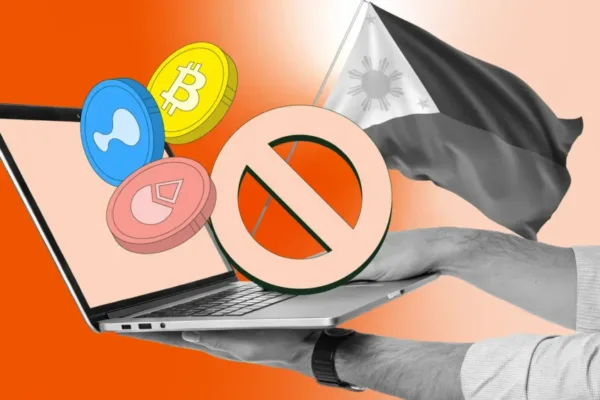
Looks like the worst part of the pandemic is over for the sake of small business owners like us and the millions of people that we employ. We are finally seeing light at the end.
Now, the main problem for the almost a million small businesses in the country is how to get back on their feet.
Online fintech lenders are stepping in for small business owners who couldn’t get a bank loan. Some entrepreneurs may need more financial resources on top of banks. Fintech lenders offer are quick, simple, and convenient loan processing. Online lending is done through mobile apps on smartphones or web portals. For a small business owner who doesn’t have time to go through the hoops in a traditional bank, online lenders are an attractive option.
Online lending is still growing and evolving as a branch of fintech. The latter is projected to grow by nearly 25 percent this year or $309.98 billion. And experts are still guessing fintech’s final form.
Just for online lending, there are peer-to-peer, trust-based social funding, working capital loans, and invoice factoring, as many ways of lending you can think of. There are several advantages to securing emergency funds through online lenders.
Advantages of online lending

1. It’s cheap
The rates are cheaper. But you have to know where to look.
Online lenders can do this because not only do they have lesser overhead costs. There’s also more competition. Traditional banks are still very much in the game. There are also more alternative lenders sprouting up by the day. You have a variety of options to choose from.
2. Fast and easy process
The second benefit is a fast and easy application process. Because alternative lenders use metrics other than FICO to assess your credit rating, more people get approved.
These include people who wouldn’t be caught dead inside a bank like the small-time vendors, peddlers, or hawkers. This easy line of credit has helped millions of mom-and-pop shops get over a rough patch in their businesses.
3. They want your business
Third, online fintech lenders are breaking the hold of traditional banks on lending and more small-time entrepreneurs are able to grow their businesses.
Bank managers and credit officers wouldn’t give us small fish the time of the day. Only big businessmen and the town’s wealthy folks have access to the bank’s credit line.
This is one secret of the wealthy folks, they are able to parlay other people’s money to grow their wealth. Banks are happily in on this because they get paid interest on deposits they hold in their vaults.
The ordinary folks, however, are denied loans because they don’t have a good history of credit because they are denied loans. It’s a vicious cycle. Online lending is able to break this twisted, roundabout scheme.
Online lending provides a streamlined, automated approval process. Your waiting is only as long as your connection is strong. With traditional institutions, your wait for days or even weeks before getting approval which is not at all a done deal.
Many small business owners have learned this hard and expensive lesson during a financial emergency. As a result, they have lost opportunities or even their businesses.
Working capital is important, especially for those in the cottage industry. Alternative lenders or online lenders present a quick solution to micro-enterprises.
So yes, fintech lending is a viable alternative for small businesses that failed to secure an SBA loan through traditional banks.
Not so fast. Be careful.
Disadvantages of online lending

1. The risk
There is a big risk in getting loans through fintech lenders. Business loans are not covered by consumer protection laws such as the Truth in Lending Act and Fair Debt Protection Practices Act . The latter applies to personal loans but it does not apply to business loans sourced from non-traditional banks which is what fintech lenders are.
State and federal authorities are still playing catch with each other on who should regulate the fast-growing fintech lenders. In the meantime, small business owners are exposing themselves to greater risks. Transparency is lacking on actual interest rates and the payments that the borrower will face in some cases.
2. The easier it is to apply the easier to get trapped.
Due to the speed and high rate of the approval process, it can be easy for people to get caught in a debt trap. People who get approved may mistake getting several loans from several online lenders.
Before you know it, you will be getting a loan to pay for a loan. That’s the last thing you want to happen.
A lot of people are just bad with finances, which is why they have to take out a loan in the first place. Just because you can’t see who you are borrowing from doesn’t mean they are not going to ask for their money, plus interest, back.
3. Not researching enough
Due to the absence of human interaction, there may be some misreading of the fine prints and other policies. You can’t ask questions if there is no one around. The FAQ page will only cover the most common questions. Chatbot AIs are still trying to catch up with human language. Expect the customer hotline to be busy when you need it.
You have to be careful and really know what you are getting into. A loan is not free money.
How to get an online loan

First is to do your research. There are a lot of online or alternative lenders you can choose from. Select one of the more established companies.
The leading ones are backed by reputable institutions. Take a look at review sites. What are people saying about these digital firms? You can visit the lender’s social media pages to get a feel of how they deal with their customers.
Are they on the news? Is it positive or negative publicity? Ask people you know if they have first-hand experience with this online lender you’re eyeing. All the information you need can be obtained with a few keyboard clicks.
Second, be responsible for your loans. Loans are not the first resort. Get one only if you have already explored other options like family or friends. Don’t get loans just to buy the newest television and other toys.
Figure out how you are going to pay for it. Where is the money coming from and how soon? Shrewd entrepreneurs use loans to finance their operations, productions, and marketing with the full knowledge of how and when they will be able to pay for what they borrowed.
Plan and manage your loans like it’s part of running a business. Because it is. Don’t treat it as a nuisance that only merits a glance every now and then. Do this and you should be alright.
Now if you have really studied getting a loan. Here is a list of fintech companies offering loans to small businesses.
If you don’t have a credit line with a bank or credit union, these fintech lenders can fill the gap.
- Fuse Lending, Inc. (“FUSE”) – is a wholly-owned subsidiary of Globe Fintech Innovations, Inc. (doing business as “Mynt”). Fuse Lending is a licensed lending institution that caters to the underserved and unbanked population in the Philippines, aiming to create and sustain opportunities for growth and stability for individuals and businesses alike through responsible and fintech-enabled lending. Fuse Lending is regulated by the Securities and Exchange Commission (SEC) of the Philippines and fully abides by its rules and regulations.
- BillEase – BillEase is the flagship product of FDFC, a financial technology company building disruptive and innovative products in retail credit for Southeast Asia. BillEase gives you offers a credit line with you can use to pay at leading stores, you then pay BillEase in installments. It’s like a credit card without the card.
- Plentina – Just like the fintech above, Plentina provides credit to purchase in-store items which you pay to Plentina in installments with interests, of course. They said they are headquartered in Silicon Valley but they have an office in Paranaque. “Qualify for an offer in under 5 minutes and immediately start paying paying (sic) for goods using your phone,” that’s what they said in their website.
- Pera247 – s a mobile app that offers credit products for Filipinos who can borrow up to ₱15,000. Just download the app, and apply for a loan. You can choose your payment terms and get reminders for payment.
- Advance – is aimed for business who want to offer ways of offering micro loans to their employees. Advance offer loans up to 50% of the employee’s salary. If you want to put up a barbecue stand or buy a motorcycle to moonlight as a delivery rider on weekends but don’t wnat to leave you fultime job yet, Advance can be an option. The caveat is that your employer has to be a member of Advance.
Some of these companies are getting ready for a new round of funding from their investors. The earlier you apply the higher your chances of not missing out.
Final thoughts
These are not charitable institutions. They make money from interests and other charges. So be very careful. Never skip the fine print. Loans are meant to be paid back. Take out loans only as a last resort.








